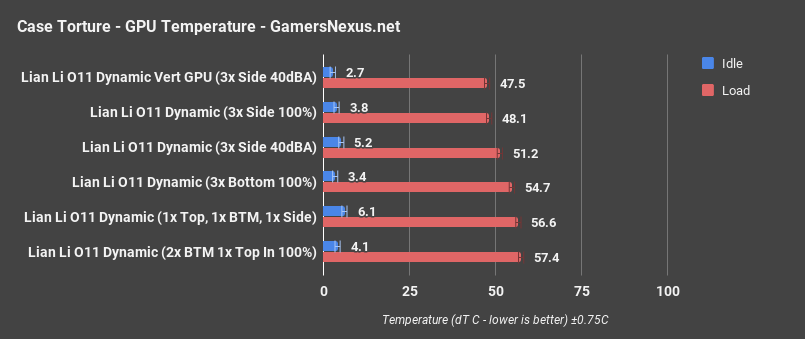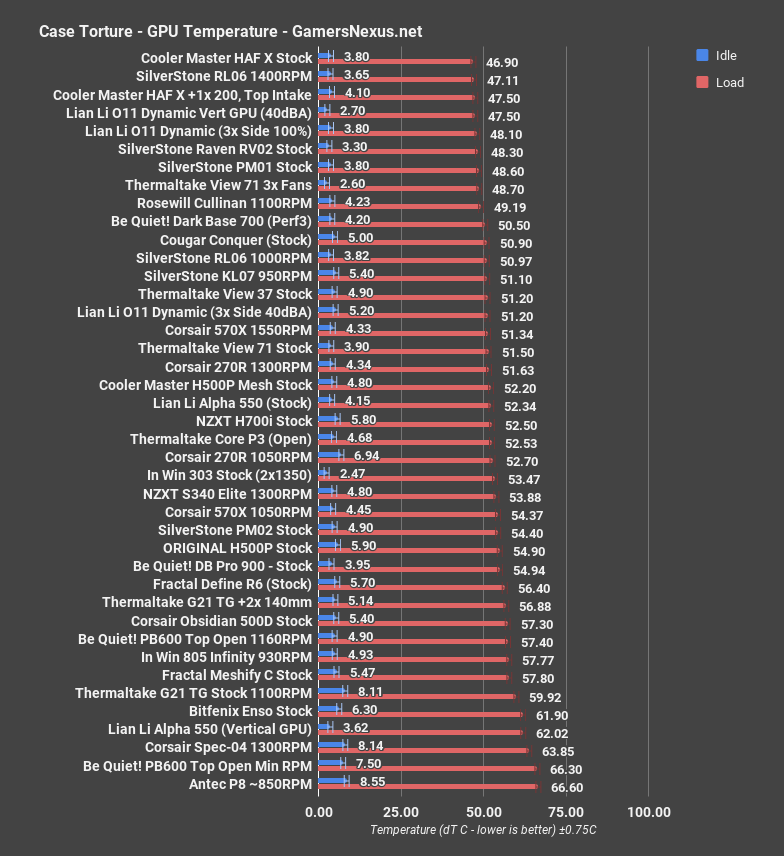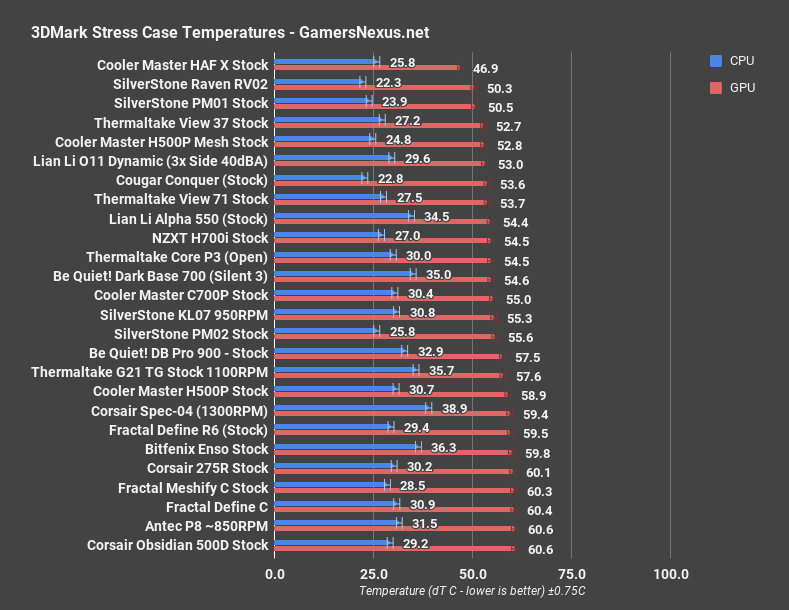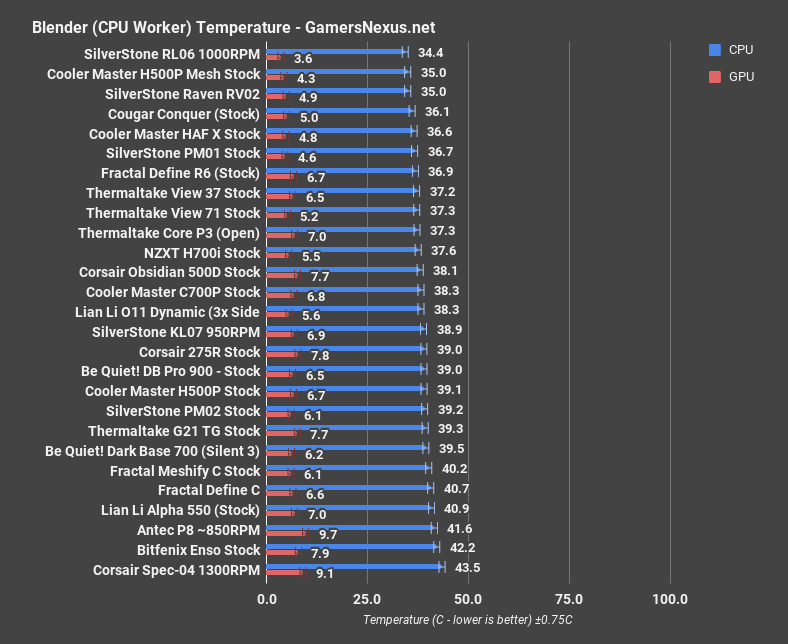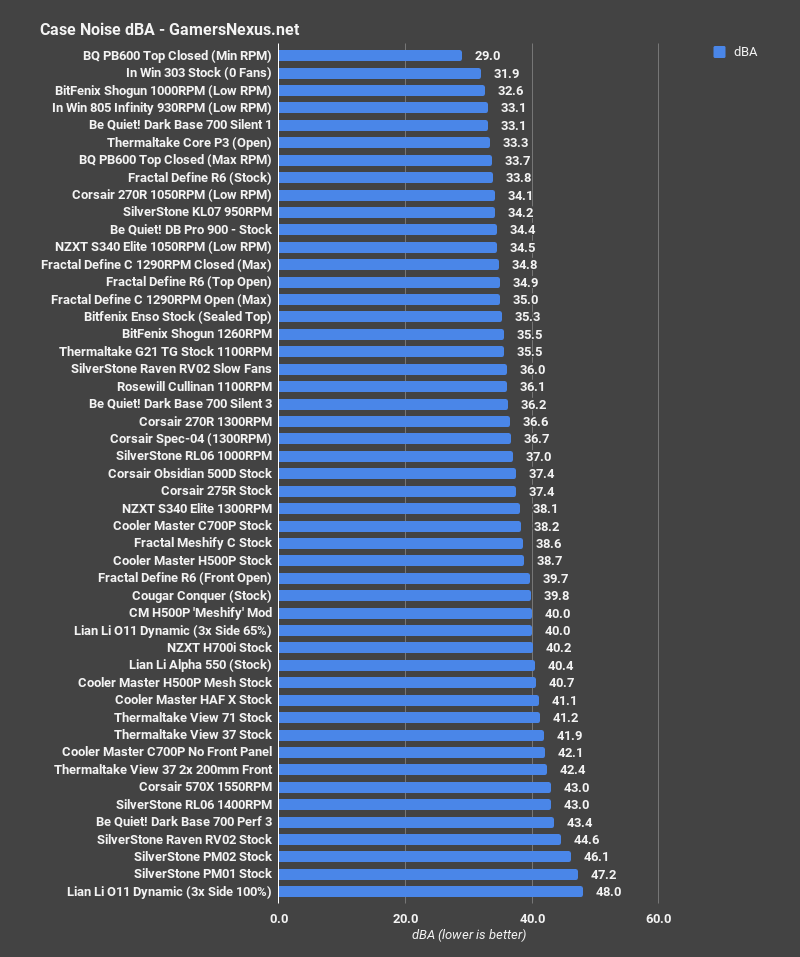We covered Lian Li’s O11 Dynamic at CES earlier this year. It’s related to the older PC-O11 model, but this new version was designed in collaboration with professional overclocker Der8auer, whom we’ve interviewed several times. It’s obvious that he knows how important good cooling is, and his delidding tools make it clear that he wouldn’t carelessly put his name on a low quality product, so we were very interested in getting our hands on one of these cases for review.
Lian Li also has a reputation, and it doesn’t involve making enclosures that are normal looking or affordable by mortals. They took a step away from that reputation with the Alpha 550X and 330, cases that at least approach a competitive price. The O11 Dynamic goes a step further, with the Newegg pre-order price set at an affordable $100, or $130 by the time this is published.
Our Lian Li O11 Dynamic review precedes the inevitable O11 Air review, which is due for a release date in May or June. The O11 Dynamic will begin shipping immediately, and is targeted more for liquid cooling enthusiasts than air-cooled builds -- but you could still buy fans, obviously, and air cool the O11 Dynamic.
Appearance and Build
The profile of the O11 Dynamic is very similar to the older PC-O11, but there are significant updates. The PC prefix has been dropped, for one.
The front glass panel is now wider and the aluminum front I/O strip is narrower, and the LIAN-LI badge at the bottom of the case is gone. In fact, in contrast to the flashy custom case we saw at CES, the only externally visible branding in the entire case is a metal plate stuck to the chassis (which could be peeled off).
The only issue with the front I/O was the power button. Some minor scratches became visible with the LED turned on, and both status LEDs are combined behind the power button so that hard drive activity makes the blue power light flicker purple. An easy solution is to leave one or both of these LEDs unplugged.
The black borders on the panels are thin, just enough to hide the steel supports underneath, and the front and side panel are flush with each other to create the illusion of a single window. We’ve seen cases with greater quantities of glass, but it’s impressive how much window space Lian Li has managed to pack in.
The PC-O11 used thumbscrews to attach the glass panels, which is a common but inconvenient and somewhat unattractive method. On the O11 Dynamic, the side and front panels are held in place by metal tabs and the top panel. Once the top is removed (by undoing two thumbscrews and sliding it backwards), the panels can be lifted up and off the case with no extra steps. It’s convenient, everything is secure when assembled, and taking the side panels off leaves the case almost completely open due to the lack of front fan mounts or other hardware. The tabs that slide and lock into place on each panel are actually sturdy little flat-topped posts, which have proven much sturdier than the usual bent flaps of metal. The one downside of this method for attaching panels is that there’s no place to grip the glass. Removing or replacing the panels requires pressing a palm against the glass and leaving big oily prints, especially if they’re wedged in tight.
We’ve seen so many NZXT S340-ish cases over the past few years that the internal layout of the O11 Dynamic seems bizarre. It does resemble past Lian Li PC-series cases, but it’s been a while since one has appeared on our radar, and we haven’t reviewed them. It’s a refreshing change, but it did require some extra thermal tests, which we’ll elaborate on in that section.
There are two PSU bays in the rear of the case which can be used simultaneously. The number of users that need that feature is very low, but an unused slot can be used to house two hard drives. The case ships with the hard drive cage in the upper slot and the PSU support in the lower one, but they can be swapped. There’s no downside to leaving the empty HDD cage installed, since it doesn’t obstruct an airflow path.
Since the space behind the mobo has to be as wide as a PSU, there’s an extra-deep cable channel with plenty of cutouts and cable tie points for fastidious builders--and for everyone else, there’s an optional metal cover that clamps over the channel and holds everything in place, tidy or not. We’ve seen these cable covers in a few different cases with varying degrees of effectiveness, but it works well here and it really does help keep thick cables tucked away. The cover does have 2.5” mounts on it, but with a big bundle of cables taking up space it’s easier to just stick 2.5” drives in the HDD cage if it’s unused.
Vertical GPU placement is something we noticed as soon as we saw the case: there are multiple slots for the vertically-oriented GPU to be mounted in, and all of them are set well away from the glass, unlike other cases which tend to suffocate air-cooled GPUs by smushing them against the side panel. The mounting kit that shipped with our case is slightly different than the one depicted in the instruction manual and it seems like a one-size-fits-all solution. The expansion slot nearest the motherboard is impossible to use with an ATX board because of clearance issues, and there are mounting holes for the riser cable that don’t correspond to any PCIe slots. Still, we didn’t have any problems fitting our extra-wide MSI 1080 (it was actually more difficult to fit horizontally with the 6-pin PCIe power connectors), and the two PCI slots nearest the glass still offer much more GPU fan clearance than other cases we’ve seen.
Case Testing Methodology
We tested using our new Skylake case test bench, detailed in the table below. This particular configuration is brand new with the launch of the 570X & 270R. Results on this test platform cannot be compared to previous case benchmark results, as the platform has completely changed.
Conducting thermal tests requires careful measurement of temperatures in the surrounding environment. We control for ambient by constantly measuring temperatures with thermocouples and laser readers. We then produce charts using a Delta T(emperature) over Ambient value. This value subtracts the thermo-logged ambient value from the measured diode temperatures, producing a delta report of thermals. AIDA64 is used for logging thermals of silicon components, including the GPU diode.
All case fans are manually configured to their maximum throughput using BIOS, then we configure to an RPM closer to 1050 for a universal "quiet" testing. If a fan controller is present, we opt-in and test on multiple settings. This forces testing of case fan performance in addition to the case's air channeling and airstream design. This also ensures minimal variance when testing, as automatically controlled fan speeds can reduce reliability of benchmarking. The CPU fan is set to 1100RPM (constant) for consistency, and the CPU is overclocked to 4.4GHz with a vCore of 1.272V (constant). C-States and power saving states are disabled.
GN Case Testing Bench (Sponsored by CableMod)
| Component | Courtesy Of | |
| Video Card | MSI GTX 1080 Gaming X (OC Mode) | MSI |
| CPU | Intel i7-6700K @ 4.4GHz | GamersNexus |
| CPU Cooler | MSI Core Frozr L | MSI |
| Motherboard | MSI Z170A Gaming M7 | MSI |
| Memory | Corsair Vengeance LED 32GB 3200MHz | Corsair |
| SSD | Samsung 850 EVO 120GB | Samsung |
| PSU | Corsair RM650x | Corsair |
| Cables | CableMod Pro Mesh Cables | CableMod |
| Case | This is what we're testing! | - |
The video card is configured to run at 55% fan speed at all times.
Prior to load testing, we collect idle temperature results for ten minutes to determine the unloaded cooling performance of a case's fans and air channels. Thermal benchmarking is conducted for 1400 seconds (23 minutes), a period we've determined sufficient for achieving equilibrium. The over-time data is aggregated and will occasionally be compiled into charts, if interesting or relevant. The equilibrium performance is averaged to create the below charts.
Load testing is conducted using Prime95 LFFTs and Kombustor “FurMark” stress testing simultaneously. Testing is completely automated using in-house scripting, and executes with perfect accuracy on every run.
We recently validated our test methodology using a thermal chamber, finding our approach to be nearly perfectly accurate. Learn more here.
Thermals & Noise
There are three groupings of fan mounts in the O11 Dynamic: top, side, and bottom. There’s a vent on the back as well, but it’s just slightly narrower than 120mm and there are no mounting points for a fan. The sideways-facing fan mounts are a distinctive feature that we’ve seen occasionally on Thermaltake cases, and it’s a good compromise between a sealed glass front panel and supplying air to the front of the case (plus the added benefit of aiming LED fans towards the side window). We’re used to front/bottom in, back/top out airflow patterns, even in cases that break all the rules. Until the mesh-fronted O11 Air comes out, though, that doesn’t apply.
The basic O11 Dynamic we were sent for review doesn’t come with any fans, which is why Lian Li can afford to offer $100 preorders. That’s fine--this is a glass case designed with liquid cooling in mind, so it’s likely that customers will already have fans they want to use. Lian Li packed nine fans with ours to enable filling every slot, but we decided 3 was a reasonable number for review. We did want to use Lian Li’s fans despite previously-mentioned controller annoyances, because they’re most likely what will ship in the more expensive case SKUs. We tried a 100% bottom intake configuration first, then two bottom intake/one top intake, then all three side intake, and finally a mix with one bottom and one side intake and one top exhaust. We compared the effectiveness of fan configurations at full speed as usual, but we noise normalized to 40dBA for our firestrike, blender, and vertical GPU tests, since the maximum speed of Lian Li’s fans is far beyond what users would realistically choose. As is probably obvious from the number of tests, we saw some odd results which persisted through multiple test passes. The O11 Dynamic definitely merits some experimentation before settling on fan placement.
Thermals - CPU Torture
Starting with standalone torture thermals on the CPU, the Lian Li O11 Dynamic (configured for air cooling) posts a wide range of results, from 49 degrees to 67 degrees Celsius over ambient. Except for the 40dBA test, all other tests were at 100% fan speeds strictly for fan placement comparisons.
We found that three side intake fans perform best, with a 49-degree over ambient CPU result, which is closest followed by the side intake fans at 40dBA, running 54 degrees. Configuring one top exhaust behind the CPU, 1 bottom intake below the GPU core, and 1 side intake near the tower cooler, we operated at 58 degrees over ambient -- about 4 degrees warmer than the muted side in take configuration at 40dBA. Going with full bottom intake was worse for the CPU, as all of the air gets shoved into the GPU, and the only output is warmed air and radiative heat into the tower cooler. Going with 2x bottom intake and 1x top intake proved the worst, a result of a complete lack of any exhaust options outside of some air recirculation and eventual drafting outward.
Thermals - CPU Torture (Comparative)
Comparatively, and focusing primarily on 40dBA testing, the Lian Li O11 Dynamic performed marginally above average with full side intake, testing at 54 degrees Celsius over ambient. This is functionally equal to the Meshify C stock, Dark Base 700, PM02, and H700i. There’s nothing special about this performance metric, aside from the fact that we still have headroom to cool better. This point is indicated by the 100% fan speed test, all 48dBA of it, at 49 degrees. Brute-forcing doesn’t get us to the top of the chart, despite burning at about 8dBA over the next grouping of loud cases, but this case is also meant for water cooling. It’s Lian Li’s Air version of the O11 that’ll focus on air cooling, and was originally suggested as shipping with 6x 120mm fans. We’re not sure if that spec stayed, but we’ll find out in May to June, when the O11 Air launches.
The case can be made to perform reasonably well, is the point, you’ll just have to add fans carefully and in the right positions.
Thermals - GPU Torture
Looking at GPU thermals first against itself, the Lian Li O11 posted a range of 48 to 57 degrees above ambient, with the 3x side intake again performing best at 48.1 degrees. The muffled side intake operated next best, at 51 degrees, with the 3x bottom intake fans performing shockingly poorly.
After further inspection, we realized this was for two reasons: One, there is limited distance between the bottom of the case and the desk, resulting in a heavier requirement for high static pressure and overall reduced access to air; two, the GPU may take the air in, but it’s having trouble getting the air out when in this configuration. The GPU horizontally blocks most airflow upwards, and so it becomes something of a closed loop that can recirculate some air. You’d ideally want some exhaust or direct ventilation from elsewhere in the case.
Our custom configurations performed worst, with the 2x bottom and 1x top triple-intake setup operating at 57 degrees over ambient.
Thermals - GPU Torture (Comparative)
Comparatively, the Lian Li O11 Dynamic ends up between the Corsair 570X at 1550RPM, the View 71, and the venerable Silverstone RL06. This positioning is at 40dBA for the Lian Li case, about the same noise level as the RL06 and the Thermaltake View 37 -- these three cases are functionally noise-normalized, and have nearly equivalent performance.
Going to 100% fan speed and 48dBA gets us most the way to the top, but not quite all the way up there. The case does fine, though, and isn’t overheating in any capacity of the word when configured with three well-placed intake fans.
3DMark
With the baseline 40dBA side intake configuration, the GPU hit 53C dT in our Firestrike Extreme stress test. That’s again roughly equivalent to the View 37 as well as the H500P Mesh. That’s among the best scores on our chart, especially for modern cases.
Blender - CPU
Temperatures while rendering on the CPU mirrored the results of the CPU torture test: 38.3C is smack in the middle of the chart. Again, liquid cooling or cranking up the fans would improve this number, but this degree of CPU cooling is fine for daily use.
Blender - GPU
GPU-accelerated rendering brought the GPU to 25.2C dT, putting it in a favorable position between the H700i and the RV02. It’s not the best score on the chart, but it’s oddly good considering that there’s no fan pointed directly into the GPU, as there is in the HAF X. We’d initially pegged the side intake fan slots as a way to show off a fancy radiator, but it seems like they can also do a good job of general cooling.
Noise
The stock O11 Dynamic has no fans, so in a way it’s completely silent, but we did use three of the fans Lian Li supplied for this review. Normally we’d keep fan speeds maxed out for all tests, including noise, but these spun up to 1900RPM and reached a shrill 48dBA, which absolutely blows away everything on the chart other than the Silverstone PM01. The noise-normalized tests offered decent performance at 40dBA, which is loud-to-average for the cases we’ve tested.
Conclusion
The O11 Dynamic is different, and that’s great. There are tons of manufacturers playing it safe at every price point with samey cases, but Lian Li has avoided falling into that rut (for better or for worse).
Performance is much better than we thought it would be, and the case is well-suited for liquid cooling radiators and open loops. The vertical GPU mount, typically a weak point for cooling performance, was handled excellently. We’re looking forward to the release of the mesh-fronted O11 Air, which should be better suited to our air-cooled test bench.
$100 for the preorder was a good price, and it’d be great if that’s what it stayed at. $130, the price it will be at by launch, is harder to recommend -- but not that hard. Buying fans could easily add another $30, depending on the quality, and that potentially brings the price past the View 71, which is on sale for $125 after rebate at the time of this writing. The difference is that Lian Li’s O11 Dynamic has a very unique, stout look, and isn’t an overwhelmingly large tower. The O11 Dynamic may target liquid cooling enthusiasts (who should already have their own fans and cooling components), but it’s completely usable as an air-cooled system. Again, not including fans was a good choice in our opinion, since the target audience likely already owns fans and doesn’t want to pay for more. $130 is a good price for those who specifically have their eye on this case and perhaps already have some fans, but everyone else should shop around a little first. The O11 Dynamic is an enthusiast’s case, and it shows.
Editorial, Testing: Patrick Lathan
Host, Test Lead: Steve Burke
Video: Andrew Coleman



